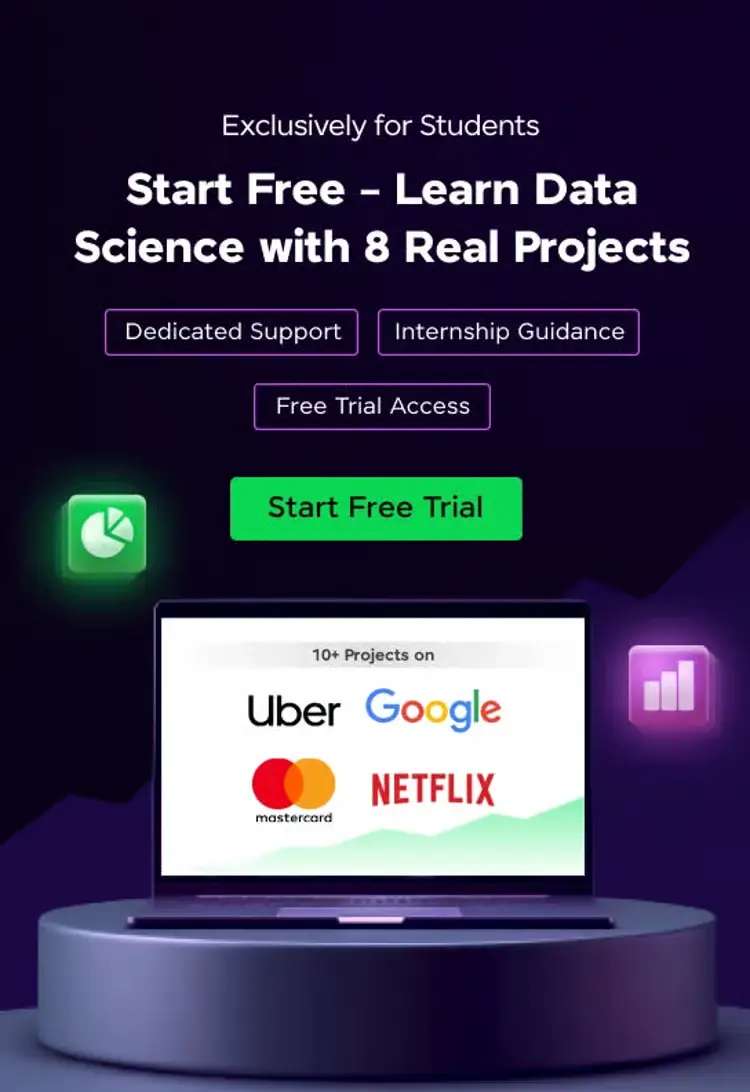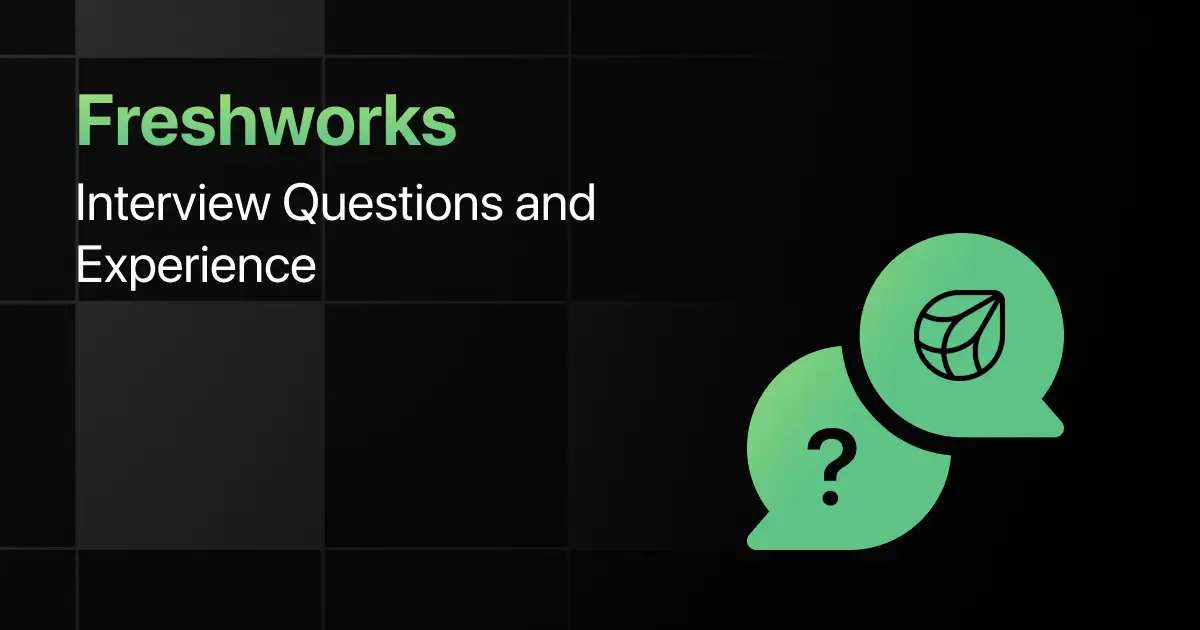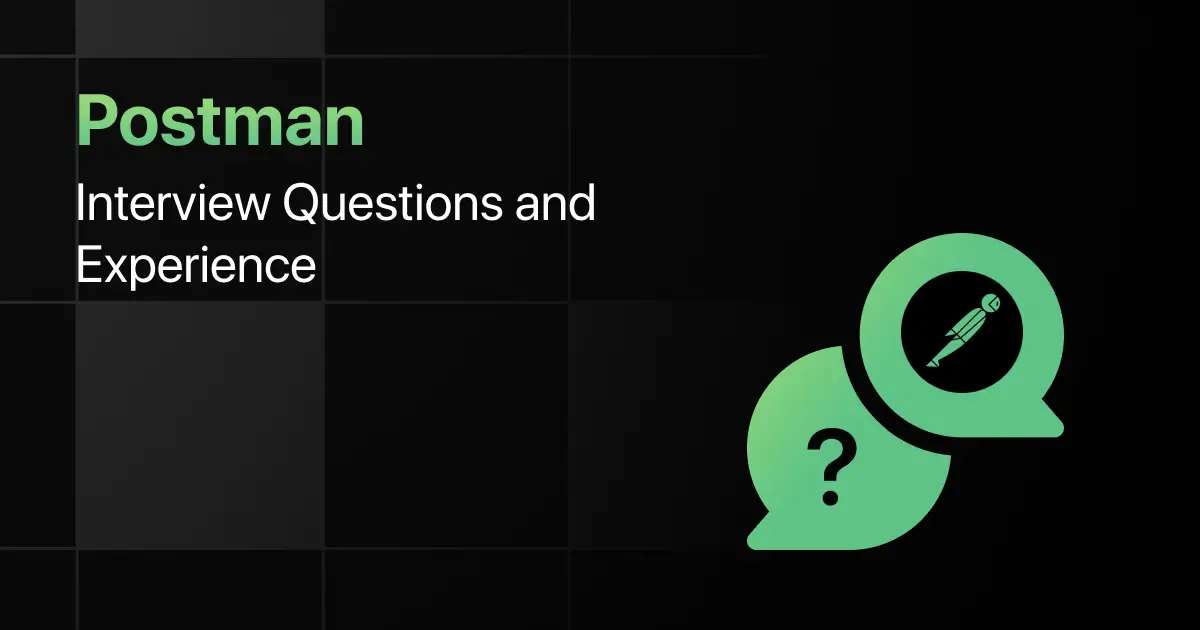Flipkart Interview Questions and Experience
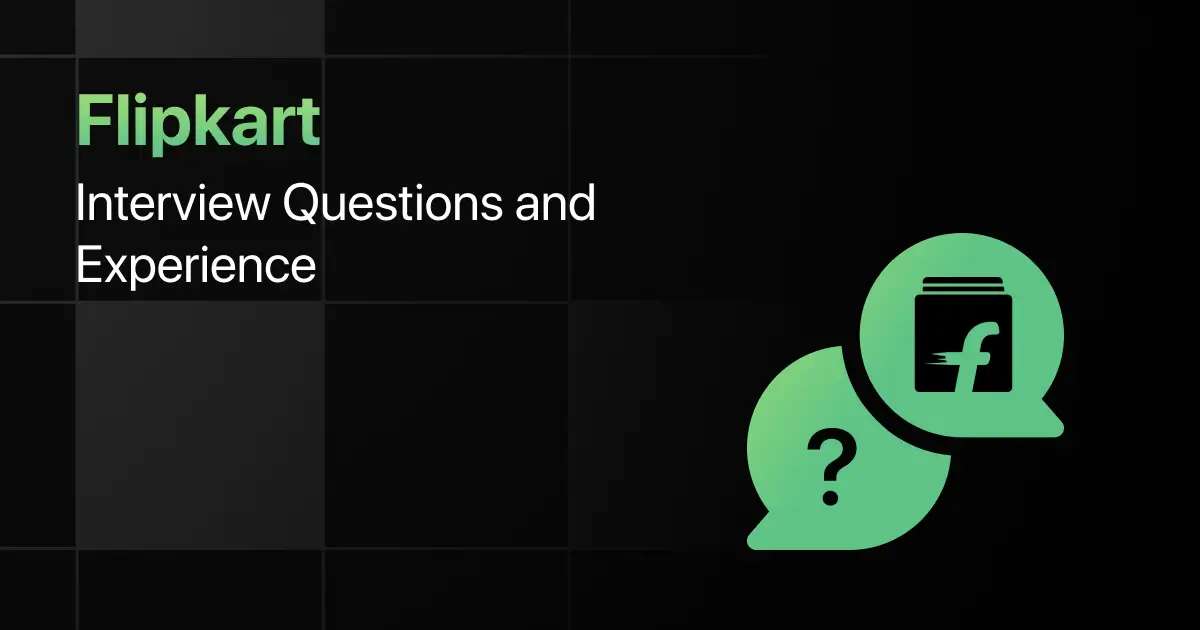
Have you ever thought about what it takes to land a job at Flipkart, one of India’s leading e-commerce giants?
Flipkart is known for its fast-paced work environment, customer-first mindset, and competitive interview process that evaluates technical depth and problem-solving skills.
In this blog, we’ll cover Flipkart’s hiring process, commonly asked interview questions, real candidate experiences, and preparation tips to help you succeed.
Flipkart Hiring Process – Overview
Here’s a quick overview of Flipkart’s hiring process:
| Category | Details |
|---|---|
| Eligibility | Open to both freshers and experienced candidates. Preferred degrees include Computer Science, IT, Engineering, Data Analytics, and related fields. |
| Rounds | Typically 4–5 rounds: Online Coding Assessment, Technical Interviews (2–3 rounds focusing on DSA, problem-solving, and system design), followed by HR/Behavioral round. |
| Job Roles Offered | Software Development Engineer (SDE), Data Analyst, Data Scientist, Product Manager, Operations Associate. |
| Salary Range | Freshers: ₹10 – ₹18 LPA (AmbitionBox, Glassdoor). Experienced: ₹25 – ₹50 LPA depending on role and expertise (AmbitionBox, Glassdoor). |
| Apply Link | Apply Now |
Top Flipkart Interview Questions
Flipkart’s interview process focuses on problem-solving, technical expertise, and cultural alignment. Technical rounds usually emphasize coding, data structures, algorithms, and system design, while role-based and behavioral rounds assess job-specific skills and teamwork abilities.
Below are some of the most common questions you can expect in a Flipkart interview.
1. Technical Questions
- What are the key differences between Array and Linked List?
Arrays store elements in contiguous memory, allowing fast random access. Linked Lists use nodes connected by pointers, offering flexibility in dynamic memory allocation. - Explain the concept of dynamic programming with a real-world example.
Dynamic programming breaks problems into subproblems and stores their solutions. For example, calculating minimum delivery routes in logistics to reduce costs. - What is the difference between SQL and NoSQL databases?
SQL databases are structured and schema-based, while NoSQL databases are flexible, suitable for unstructured data, and support high scalability. - How would you design a recommendation system for Flipkart?
By using collaborative filtering, content-based filtering, and machine learning models to recommend products based on user preferences and purchase history. - What is caching, and why is it important in e-commerce systems?
Caching stores frequently accessed data temporarily to reduce latency and improve user experience during high-traffic events like Big Billion Days. - What is the difference between multithreading and multiprocessing?
Multithreading allows multiple threads within a process to share memory, while multiprocessing uses separate processes with independent memory. - Explain the concept of load balancing.
Load balancing distributes incoming requests across multiple servers to ensure reliability, reduce downtime, and handle traffic spikes effectively. - What are ACID properties in databases?
Atomicity, Consistency, Isolation, and Durability — ensuring reliable transactions in Flipkart’s payment and order management systems. - What is the difference between BFS and DFS?
BFS explores neighbors level by level, while DFS goes deep into one branch before backtracking. BFS is useful for shortest path problems. - What are microservices, and why does Flipkart use them?
Microservices break applications into smaller independent services, making them scalable, easier to deploy, and fault-tolerant for handling millions of daily transactions. - What is latency, and how does it affect user experience?
Latency is the delay in response time. High latency in an e-commerce app may cause slow checkouts, abandoned carts, and customer dissatisfaction. - Explain consistency vs availability in distributed systems.
Consistency ensures the same data across nodes, while availability ensures system responsiveness. In practice, Flipkart balances both using the CAP theorem. - What is the importance of indexing in databases?
Indexing speeds up query retrieval by creating references to data, improving performance in large databases like product catalogs. - How does Flipkart handle high-traffic events like Big Billion Days?
Through auto-scaling, distributed databases, caching, and load balancing to handle millions of concurrent users smoothly. - What is a CDN and why is it used in e-commerce?
A Content Delivery Network stores cached content in multiple locations to reduce latency and improve site speed for global users.
2. Role-Based Questions
For Freshers (Software Engineer / SDE 1)
- Why do you want to join Flipkart as a fresher?
It offers the chance to work on large-scale systems, learn from experts, and contribute to India’s leading e-commerce platform. - What challenges do you expect in your first role at Flipkart?
Learning to adapt to large distributed systems, collaborating across teams, and ensuring high-quality code under tight deadlines. - How do you explain object-oriented programming in simple terms?
It organizes software into objects, like real-world entities, with properties and behaviors that interact with one another. - What do you know about Flipkart’s tech stack?
Flipkart uses a mix of Java, Python, microservices, distributed systems, and big data technologies for scalability and performance.
For Data Analyst
- What metrics would you track to measure Flipkart’s customer engagement?
Active users, repeat purchases, average order value, and cart abandonment rate. - How do you handle missing values in datasets?
Options include imputation (mean/median/mode), predictive modeling, or discarding depending on the proportion of missing data. - Write an SQL query to find top-selling products.
By joining orders and products tables, grouping by product ID, and ordering by sales count in descending order. - How would you analyze customer behavior trends?
By segmenting customers based on purchase frequency, categories, demographics, and analyzing seasonal buying patterns.
For Data Scientist / ML Engineer
- How would you build a product recommendation engine for Flipkart?
By combining collaborative filtering, NLP for product descriptions, and deep learning for personalized suggestions. - What steps would you take to prevent fraud in online transactions?
Use anomaly detection, machine learning classification, and real-time monitoring of suspicious activities. - What features would you include in a demand forecasting model?
Past sales data, product category, seasonality, discounts, marketing campaigns, and external factors like festivals or inflation. - How would you evaluate the performance of a product recommendation model?
Using metrics like precision, recall, F1-score, click-through rate (CTR), and conversion rate.
For Managerial Roles (Engineering Manager / Product Manager)
- How do you prioritize product features for Flipkart?
By aligning business goals, customer needs, and technical feasibility, often using frameworks like RICE or MoSCoW. - How do you handle system downtime during a peak sale event?
Activate disaster recovery protocols, reallocate resources, communicate transparently, and conduct a root-cause analysis post-event. - What leadership style do you believe works best at Flipkart?
A mix of participative and results-driven leadership, balancing collaboration with accountability to deliver business outcomes. - How do you ensure customer-first thinking in product development?
By integrating customer feedback into design, continuously analyzing usage data, and focusing on simplicity and convenience.
3. Behavioral Questions
- Tell me about a time you worked on a challenging team project.
During college, I collaborated on a large coding project, ensuring clear communication and responsibility sharing, which helped us complete it successfully. - How do you handle disagreements with teammates?
I listen to their perspective, provide data to support my view, and find a balanced solution acceptable to both sides. - Describe a situation where you had to adapt quickly to changes.
In my internship, project requirements changed suddenly, and I quickly learned a new tool to deliver results on time. - How do you prioritize tasks when deadlines are tight?
By breaking tasks into smaller milestones, focusing on high-priority deliverables first, and keeping stakeholders updated regularly. - Give an example of when you showed leadership without a formal role.
I took charge during a hackathon project by organizing tasks, motivating the team, and ensuring delivery, which led to a top position. - How do you ensure clear communication with cross-functional teams?
By using structured updates, clarifying goals at the start, and confirming alignment through regular check-ins. - What motivates you to work in a fast-paced company like Flipkart?
The opportunity to solve real-world large-scale problems, contribute to millions of users, and grow through challenging assignments. - Why do you think cultural fit is important at Flipkart?
Because Flipkart values customer focus, innovation, and ownership, ensuring employees thrive and collaborate in a dynamic environment.
Flipkart Interview Experiences
1. SDE-1 role Interview Experience (Fresher)
Here’s the interview journey of Ujjval Saini, who appeared for Flipkart’s SDE-1 role through an off-campus drive.
Candidate Background:
Ujjval completed his graduation in Computer Science and had prior internship experience in full-stack technologies. He was skilled in Python, Java, Spring Boot, REST APIs, and problem-solving.
Interview Process They Faced
- The process had 4 rounds:
- Online Assessment (90 minutes) – 3 coding problems (prime numbers, ad-hoc implementation, binary search on the answer).
- Problem Solving & Data Structures Round 1 – mathematical + hash table problem and a non-standard graph question.
- Problem Solving & Data Structures Round 2 – dynamic programming variant and a graph problem based on topological sorting.
- Hiring Managerial Round – mix of technical and behavioral questions about internship projects, Python, PyTest, Jenkins, Java, Spring Boot, DBMS, REST APIs, and teamwork.
Questions Asked
- Prime number and ad-hoc coding problems.
- Graph-based problem with DFS modifications.
- Variation of standard dynamic programming problem.
- Modified topological sorting question.
- Internship project explanation, including tools like Jenkins and PyTest.
- Technical discussion on Java, DBMS, REST APIs, and SDLC.
Outcome & Difficulty Level:
Ujjval cleared all rounds and received an offer. He found the graph problems and managerial round challenging but manageable. He emphasized that thorough revision, resume preparation, and actively engaging with interviewers helped him succeed.
2. SDE-2 backend Role Interview Experience (Experienced)
This is the interview experience of Himanshu Yadav, who appeared for Flipkart’s SDE-2 backend role in 2025.
Candidate Background:
Himanshu was an experienced backend engineer with expertise in Core Java, backend design, system design, and problem-solving. He had prior project experience in distributed systems and real-world backend services.
Interview Process They Faced
- The process consisted of 4 rounds over 9 days:
- Machine Coding Round – build an investing application with user, stock, buy/sell, and portfolio functionalities. Time: 90 minutes.
- DSA Round – 2 medium-level problems related to strings, recursion, and dynamic programming.
- System Design Round – design a Spotify service, covering requirements, entities, search optimization, scalability, and component discussion.
- Hiring Manager Round – career goals, reasons for switching, project discussions, conflict handling, and expectations from the next team.
Questions Asked
- Machine coding: Investing application with portfolio tracking, modular design, exception handling, and correct data structures.
- DSA: String problems, recursion, and dynamic programming.
- Design: Spotify-like service, focusing on scalability and search optimization.
- HR/Managerial: career goals, conflict with manager, switching reason, and project ownership.
Outcome & Difficulty Level:
Himanshu cleared all rounds and received an offer letter after two weeks. He described the machine coding and design rounds as the toughest, requiring both speed and structured communication. His advice was to prepare incrementally, practice system design, and rehearse common managerial questions.
Preparation Tips for Flipkart Interviews
Flipkart interviews demand strong technical foundations, analytical thinking, and adaptability. Preparing with the right strategy will help you stand out among other candidates.
- Revise Fundamentals: Strengthen your basics in data structures, algorithms, operating systems, and databases, as these are frequently tested in technical rounds.
- Practice Coding Problems: Regularly solve coding and problem-solving exercises on platforms like HackerRank, LeetCode, or PlacementPreparation.io to improve speed and accuracy.
- Understand System Design: For experienced roles, be ready to discuss scalability, distributed systems, and e-commerce-specific design challenges.
- Know Flipkart’s Business: Learn about Flipkart’s products, recent initiatives, and its technology-driven operations to connect your answers with real business scenarios.
- Prepare Behavioral Examples: Use the STAR method to answer cultural fit and teamwork questions, highlighting adaptability, ownership, and leadership.
- Take Mock Interviews: Simulate interviews with peers or mentors to practice structuring answers and build confidence under time pressure.
Final Words
Flipkart interviews are structured to test both your technical expertise and alignment with the company’s customer-first culture. With consistent practice, solid fundamentals, and a clear understanding of Flipkart’s ecosystem, you can confidently navigate the process and secure your role.
Explore More for
- Amazon
- Salesforce
- Oracle
- Microsoft
- IBM
- Adobe
- Apple
- Uber
- Meesho
- Zomato
- Swiggy
- Phonepe
- Zoho
- Postman
- Freshworks
- Paytm
- Darwinbox
FAQs
Common Flipkart interview questions cover data structures, algorithms, databases, system design, problem-solving, and behavioral scenarios related to teamwork and leadership.
Flipkart interview questions for freshers are moderately tough, focusing on coding fundamentals, logical reasoning, problem-solving, and adaptability to large-scale systems.
The Flipkart interview process usually takes 2–4 weeks, depending on the role, number of rounds, and scheduling between teams.
Candidates should focus on data structures, algorithms, SQL, system design basics, and analytical problem-solving relevant to e-commerce challenges.
Common mistakes include weak coding explanations, overlooking edge cases, poor communication, lack of role research, and underestimating behavioral or cultural questions.
Flipkart typically conducts 4–5 rounds, including online coding assessment, two or more technical interviews, and a final HR or behavioral discussion.
Yes, freshers face fundamental coding and problem-solving, while experienced candidates are tested on advanced system design, scalability, analytics, or leadership responsibilities.
The best way to prepare for Flipkart interviews is consistent coding practice, system design preparation, and using PlacementPreparation.io for tailored interview resources.
Related Posts
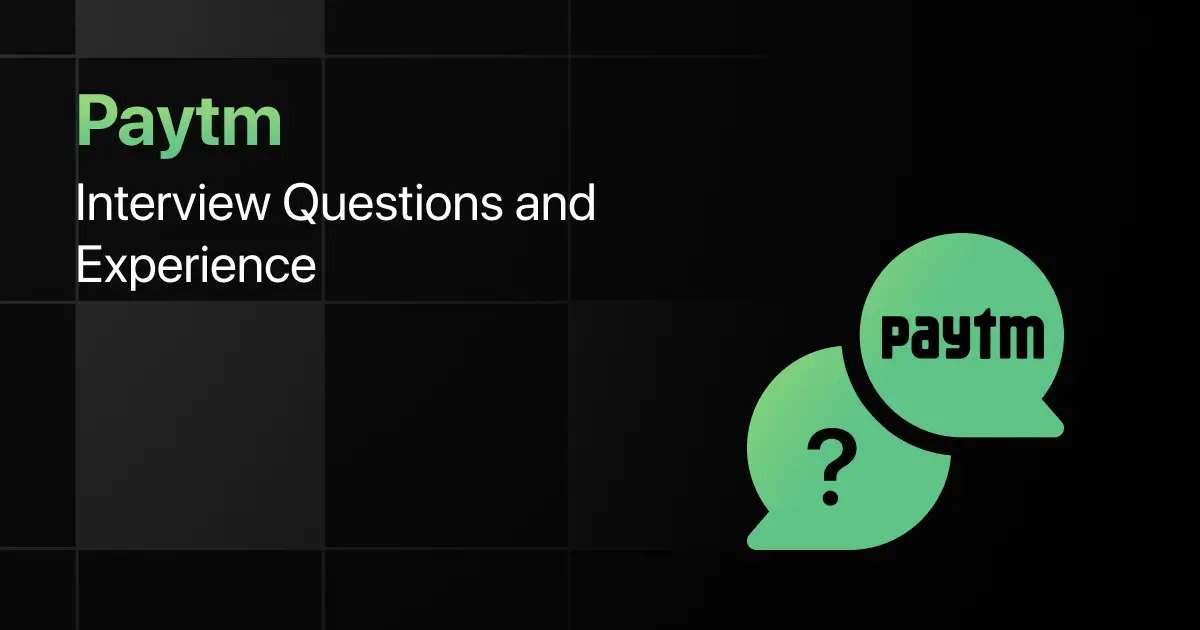

Paytm Interview Questions and Experience
Preparing for a Paytm interview requires a clear understanding of the company’s hiring process, the type of questions asked, and …
Warning: Undefined variable $post_id in /var/www/wordpress/wp-content/themes/placementpreparation/template-parts/popup-zenlite.php on line 1050


